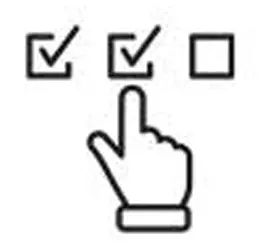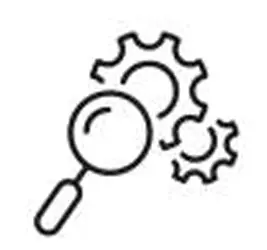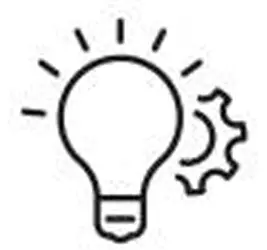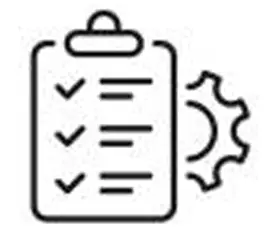유머 분류
How To Find The Perfect Titrating Medication Online
작성자 정보
- Bart 작성
- 작성일
본문
What is Titration of Medication?
The titration of a medication is a way to find a balance between side effects and the effectiveness of a medication. It may take some time and it is essential to be open with your doctor.
Typically, a doctor will start with a low dose of the medication, and then gradually increase it until the desired effect is attained. This will help minimize the chance of over-dosing.
It is a process of trial and error
Titration is a method of trial and error which involves gradually increasing the medication dosage to achieve the desired therapeutic effect. It is utilized to treat mental health issues like ADHD and depression. During this procedure, doctors will watch for any improvements or side effects, and adjust dosage accordingly. The goal is to strike the right balance between minimizing symptoms and side effects.
It is crucial to recognize that every patient responds differently to different medications. Some patients may require up-titrate the drug, while others may require a decrease in it. This is because each person's brain's chemical chemistry is different. This is why it's important to ask your doctor questions and note your personal symptoms.
The titration can be a long process that can take weeks or even months. Patients must be informed of any side effects or improvements in their desired symptoms to ensure the optimal dosage is reached. This method is used by doctors to determine the correct dosage for a Phase I clinical trial of a new drug.
When titrating intravenous medications it is crucial to document the correct rate in order to maintain patient safety. The interprofessional team at Overton Brooks VA Medical Center designed a flyer that outlines the elements of an effective medication titration prescription. They review these orders on a daily basis and guide staff through the titration process.
In this time, it is important to make regular appointments with your doctor to keep track of your progress and discuss any adverse effects. If you're not seeing any positive changes, it's time to consult your doctor about alternative treatment options.
It can be difficult to find the ideal balance between relief from symptoms and adverse side adverse effects. Therefore, it is important to remain in constant contact with your doctor archideas.eu during the period of titration. This will help them make accurate adjustments to get you feeling better as soon as possible. If the titration process isn't working then your doctor will have to try another medication. With perseverance and patience they will be able to locate a suitable medication for you.
It is a joint effort between the patient healthcare team, the patient and the hospital.
The dosage of a patient's medication is contingent on their individual needs and characteristics. These include weight, age, allergies, health history, and any other medications that the patient is taking. Other factors, like side effects and their effects on the health of the patient, are also important. It is essential for healthcare professionals to work together to ensure the most effective outcome for their patients.
Titration of medications involves gradually increasing or decreasing the dosage until you find the ideal balance between effectiveness and adverse effects. When the dosage is decreased, the process is called "down titration", and when the dosage is increased, it is called "up titration". It is a complex procedure however it's a reliable method to maximize the therapeutic effects of a drug and prevent side-effects.
It is crucial that patients stick to their titration regimen. Patients should be patient, and realize that results take time. It can also be helpful to track symptoms relief on a daily basis by making the list or rating scale, such as The Weiss functional impairment Rating Scale. This will help patients communicate with their doctor if they aren't seeing the desired results or are experiencing any adverse effects.
During the titration process, healthcare professionals evaluate the patient's reaction to medication and adjust as required. This helps them achieve the best therapeutic result while minimizing the risk of side effects and maximizing patient safety. Collaboration between different healthcare professionals is essential for archideas.eu titration of medication, including doctors and pharmacists.
Titrating medication is a vital component of treating a variety of mental health issues. A psychiatrist who specializes in psychiatric issues can help patients find the right medication and dosage to achieve optimal clinical outcomes and minimize adverse negative effects. The titration process can be challenging for nurses, particularly when the guidelines don't match with clinical practice. However if nurses continue push for changes to the guidelines and work with their critical care teams, Online they can have an impact. They can also leverage their professional associations, unions, and shared governance groups to make this a priority.
It is a way of managing risk
Titration is a successful risk management technique that involves adjusting the dosages of drugs to get the maximum benefit with minimal side effects. It starts with a very small amount and then gradually increases until the medication is at its target dosage. This allows the body to adjust to the medication, and decreases the risk of adverse effects. For example, a patient with high blood pressure may have to up the dosage to manage it, whereas diabetics may need to decrease their dosage to treat hypoglycemia.
This approach to managing risk has numerous benefits, such as reducing the use of healthcare and prescriptions. It's also cost-effective for both the health system as well as patients. Moreover, the use of the telehealth system to facilitate titration-related medical visits can help reduce costs even more. This is particularly important when dealing with medications prescribed for chronic conditions.
Titrating medicines is an essential component of clinical trials for the development of new medicines. It is a way to determine if a medication has an effective therapeutic window. This is the period of time that it is accepted and effective by patients. In the past, researchers in clinical trials have identified a suitable dose/regimen in the population with a high dose-response profile during phase I trials and carried this dose into subsequent stages of development. This approach may not be appropriate for conditions that have a wide range of interindividual response variability.
Medication titration can be challenging, especially in an environment like a hospital. Numerous studies have shown that nurses document the titration of medications in various ways and there is a lack of consensus on a standardized titration schedule. The absence of a consistent and reliable method of documenting is a major obstacle to reducing adverse reactions and improving the outcomes for patients.
To overcome these obstacles, the Overton Brooks VMAC interprofessional team created a medication titration SOP and shared it with staff. The team also developed an PowerPoint presentation to illustrate the medication prescription and documentation expectations as well as block charting (documentation over a time period, usually in 4-hour increments). The QSV found that critical care nurses documented the titration rate in a variety of ways and did not document the clinical assessment reasons behind making titration rate changes.
It is a patient centered method.
The titration process is a vital aspect of medication management, as it ensures that patients receive the correct dose based on their symptoms and adverse effects. It's a long-winded process, but it's necessary to ensure that patients get the best outcome possible from their treatment. In the titration phase healthcare professionals carefully assess the patient's medical history and symptoms to determine the appropriate dosage. To reduce the risk of adverse side effects it is also important to consider any pre-existing conditions and allergies.
Once the initial dosage is established, healthcare professionals will carefully observe and assess the patient's response to the drug. The dosage could be altered according to the needs of the patient. It could be necessary to lower the dosage if the medication is causing unwanted side effects, or increase the dose if medication isn't working. Additionally, healthcare experts will work closely with the patient to ensure that they know what the drug is doing for them and how it affects their quality of life.
Certain medications are suitable for response-guided titration because the disease they treat is symptomatic, and can be monitored by a biomarker or other measures of effectiveness (e.g. hemoglobin A1c levels for diabetes or the assessment of patient symptoms of nausea). Certain drugs are not suitable for response-guided dosage titration because their indications require that they be administered at the highest tolerated dose by the patient or because the therapeutic effect of the medication is diminished by the toxic effects.
It can be a challenge to determine the proper dosage, but every patient is different. If a medication doesn't work well, it can have serious or even fatal adverse consequences. Therefore, it is essential to take a patient-centered approach and be attentive to their concerns and needs.
 Nurses are often dissatisfied with the titration adhd guidelines that they believe hinder their ability to provide the best care for patients. They also fear being disciplined for straying from the titration guidelines which could result in inadequate patient care. In a study published in the American Journal of Critical Careopens a new tab or window 80 percent of nurses claimed that titration guidelines hindered them from providing timely and secure treatment. The researchers of the study suggested that hospitals reconsider changing their titration policies to allow nurses more flexibility with regard to the duration and frequency of titration.
Nurses are often dissatisfied with the titration adhd guidelines that they believe hinder their ability to provide the best care for patients. They also fear being disciplined for straying from the titration guidelines which could result in inadequate patient care. In a study published in the American Journal of Critical Careopens a new tab or window 80 percent of nurses claimed that titration guidelines hindered them from providing timely and secure treatment. The researchers of the study suggested that hospitals reconsider changing their titration policies to allow nurses more flexibility with regard to the duration and frequency of titration.
The titration of a medication is a way to find a balance between side effects and the effectiveness of a medication. It may take some time and it is essential to be open with your doctor.
Typically, a doctor will start with a low dose of the medication, and then gradually increase it until the desired effect is attained. This will help minimize the chance of over-dosing.
It is a process of trial and error
Titration is a method of trial and error which involves gradually increasing the medication dosage to achieve the desired therapeutic effect. It is utilized to treat mental health issues like ADHD and depression. During this procedure, doctors will watch for any improvements or side effects, and adjust dosage accordingly. The goal is to strike the right balance between minimizing symptoms and side effects.
It is crucial to recognize that every patient responds differently to different medications. Some patients may require up-titrate the drug, while others may require a decrease in it. This is because each person's brain's chemical chemistry is different. This is why it's important to ask your doctor questions and note your personal symptoms.
The titration can be a long process that can take weeks or even months. Patients must be informed of any side effects or improvements in their desired symptoms to ensure the optimal dosage is reached. This method is used by doctors to determine the correct dosage for a Phase I clinical trial of a new drug.
When titrating intravenous medications it is crucial to document the correct rate in order to maintain patient safety. The interprofessional team at Overton Brooks VA Medical Center designed a flyer that outlines the elements of an effective medication titration prescription. They review these orders on a daily basis and guide staff through the titration process.
In this time, it is important to make regular appointments with your doctor to keep track of your progress and discuss any adverse effects. If you're not seeing any positive changes, it's time to consult your doctor about alternative treatment options.
It can be difficult to find the ideal balance between relief from symptoms and adverse side adverse effects. Therefore, it is important to remain in constant contact with your doctor archideas.eu during the period of titration. This will help them make accurate adjustments to get you feeling better as soon as possible. If the titration process isn't working then your doctor will have to try another medication. With perseverance and patience they will be able to locate a suitable medication for you.
It is a joint effort between the patient healthcare team, the patient and the hospital.
The dosage of a patient's medication is contingent on their individual needs and characteristics. These include weight, age, allergies, health history, and any other medications that the patient is taking. Other factors, like side effects and their effects on the health of the patient, are also important. It is essential for healthcare professionals to work together to ensure the most effective outcome for their patients.
Titration of medications involves gradually increasing or decreasing the dosage until you find the ideal balance between effectiveness and adverse effects. When the dosage is decreased, the process is called "down titration", and when the dosage is increased, it is called "up titration". It is a complex procedure however it's a reliable method to maximize the therapeutic effects of a drug and prevent side-effects.
It is crucial that patients stick to their titration regimen. Patients should be patient, and realize that results take time. It can also be helpful to track symptoms relief on a daily basis by making the list or rating scale, such as The Weiss functional impairment Rating Scale. This will help patients communicate with their doctor if they aren't seeing the desired results or are experiencing any adverse effects.
During the titration process, healthcare professionals evaluate the patient's reaction to medication and adjust as required. This helps them achieve the best therapeutic result while minimizing the risk of side effects and maximizing patient safety. Collaboration between different healthcare professionals is essential for archideas.eu titration of medication, including doctors and pharmacists.
Titrating medication is a vital component of treating a variety of mental health issues. A psychiatrist who specializes in psychiatric issues can help patients find the right medication and dosage to achieve optimal clinical outcomes and minimize adverse negative effects. The titration process can be challenging for nurses, particularly when the guidelines don't match with clinical practice. However if nurses continue push for changes to the guidelines and work with their critical care teams, Online they can have an impact. They can also leverage their professional associations, unions, and shared governance groups to make this a priority.
It is a way of managing risk
Titration is a successful risk management technique that involves adjusting the dosages of drugs to get the maximum benefit with minimal side effects. It starts with a very small amount and then gradually increases until the medication is at its target dosage. This allows the body to adjust to the medication, and decreases the risk of adverse effects. For example, a patient with high blood pressure may have to up the dosage to manage it, whereas diabetics may need to decrease their dosage to treat hypoglycemia.
This approach to managing risk has numerous benefits, such as reducing the use of healthcare and prescriptions. It's also cost-effective for both the health system as well as patients. Moreover, the use of the telehealth system to facilitate titration-related medical visits can help reduce costs even more. This is particularly important when dealing with medications prescribed for chronic conditions.
Titrating medicines is an essential component of clinical trials for the development of new medicines. It is a way to determine if a medication has an effective therapeutic window. This is the period of time that it is accepted and effective by patients. In the past, researchers in clinical trials have identified a suitable dose/regimen in the population with a high dose-response profile during phase I trials and carried this dose into subsequent stages of development. This approach may not be appropriate for conditions that have a wide range of interindividual response variability.
Medication titration can be challenging, especially in an environment like a hospital. Numerous studies have shown that nurses document the titration of medications in various ways and there is a lack of consensus on a standardized titration schedule. The absence of a consistent and reliable method of documenting is a major obstacle to reducing adverse reactions and improving the outcomes for patients.
To overcome these obstacles, the Overton Brooks VMAC interprofessional team created a medication titration SOP and shared it with staff. The team also developed an PowerPoint presentation to illustrate the medication prescription and documentation expectations as well as block charting (documentation over a time period, usually in 4-hour increments). The QSV found that critical care nurses documented the titration rate in a variety of ways and did not document the clinical assessment reasons behind making titration rate changes.
It is a patient centered method.
The titration process is a vital aspect of medication management, as it ensures that patients receive the correct dose based on their symptoms and adverse effects. It's a long-winded process, but it's necessary to ensure that patients get the best outcome possible from their treatment. In the titration phase healthcare professionals carefully assess the patient's medical history and symptoms to determine the appropriate dosage. To reduce the risk of adverse side effects it is also important to consider any pre-existing conditions and allergies.
Once the initial dosage is established, healthcare professionals will carefully observe and assess the patient's response to the drug. The dosage could be altered according to the needs of the patient. It could be necessary to lower the dosage if the medication is causing unwanted side effects, or increase the dose if medication isn't working. Additionally, healthcare experts will work closely with the patient to ensure that they know what the drug is doing for them and how it affects their quality of life.
Certain medications are suitable for response-guided titration because the disease they treat is symptomatic, and can be monitored by a biomarker or other measures of effectiveness (e.g. hemoglobin A1c levels for diabetes or the assessment of patient symptoms of nausea). Certain drugs are not suitable for response-guided dosage titration because their indications require that they be administered at the highest tolerated dose by the patient or because the therapeutic effect of the medication is diminished by the toxic effects.
It can be a challenge to determine the proper dosage, but every patient is different. If a medication doesn't work well, it can have serious or even fatal adverse consequences. Therefore, it is essential to take a patient-centered approach and be attentive to their concerns and needs.
 Nurses are often dissatisfied with the titration adhd guidelines that they believe hinder their ability to provide the best care for patients. They also fear being disciplined for straying from the titration guidelines which could result in inadequate patient care. In a study published in the American Journal of Critical Careopens a new tab or window 80 percent of nurses claimed that titration guidelines hindered them from providing timely and secure treatment. The researchers of the study suggested that hospitals reconsider changing their titration policies to allow nurses more flexibility with regard to the duration and frequency of titration.
Nurses are often dissatisfied with the titration adhd guidelines that they believe hinder their ability to provide the best care for patients. They also fear being disciplined for straying from the titration guidelines which could result in inadequate patient care. In a study published in the American Journal of Critical Careopens a new tab or window 80 percent of nurses claimed that titration guidelines hindered them from providing timely and secure treatment. The researchers of the study suggested that hospitals reconsider changing their titration policies to allow nurses more flexibility with regard to the duration and frequency of titration. 관련자료
-
이전
-
다음작성일 2024.05.08 00:54
댓글 0
등록된 댓글이 없습니다.






